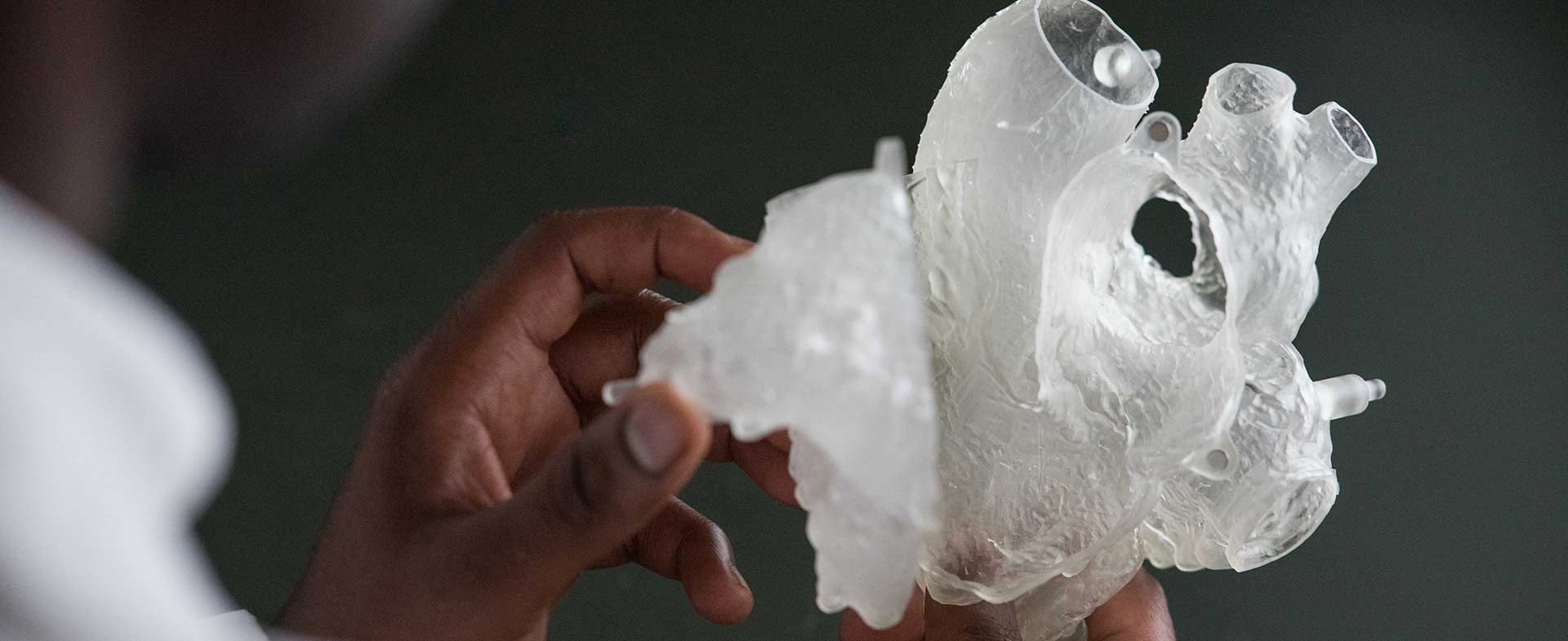The human heart is a marvel – a magnificent structure that functions to pump blood through our bodies, supplying oxygen and other nutrition to our tissues and removing carbon dioxide and other waste. Any time an abnormality or defect weakens the heart’s structure – its walls, valves and muscles – it’s referred to as structural heart disease.
This is different from coronary artery disease, which concerns the heart’s “plumbing,” or problems with the blood vessels that feed the heart, such as narrowed or blocked arteries that can lead to heart attack. It’s also different from an arrhythmia, like AFib, which is essentially a problem with the heart’s electrical system.
“In a healthy heart, the four valves work together to move blood from the upper to the lower chambers, pushing it out to the lungs and other organs,” explains interventional cardiologist Matthew Jonovich, M.D. “One or more defective valves affect the heart’s normal function and can lead to serious health complications, including migraines, breathing difficulty, kidney failure and stroke.”
Structural heart problems are most often present at birth (congenital), but they can also develop with aging or as a result of other diseases.
How Structural Heart Conditions Are Treated

Heart Care At Henry Ford
Defective heart valves and other structural heart defects are often treated through traditional open-heart surgery. Several minimally invasive procedures to address these issues are becoming more common as well, including valvuloplasty to repair a stiff heart valve, and transcatheter aortic valve replacement (TAVR), which is the advanced procedure rock musician Mick Jagger reportedly underwent this past spring.
The groundbreaking TAVR procedure allows doctors to replace a defective heart valve without open-heart surgery. It was first performed in the United States in 2005 by William O’Neill, M.D., who is the medical director for the Center for Structural Heart Disease for Henry Ford Health, where more than 1,500 TAVR procedures have been completed.
“TAVR is a minimally invasive procedure, but it is also highly complex. It involves the placement of a new aortic valve into the heart without removing the old, defective valve,” explains Dr. Jonovich, who is part of Henry Ford’s expanded structural heart program which includes services at Henry Ford Jackson Hospital and Henry Ford Macomb Hospital. “The physicians and teams who perform TAVR go through extensive training and are required to perform a number of preliminary heart procedures to qualify.”
TAVR also requires a custom-built procedures room to accommodate the advanced imaging technology and other specialized equipment needed to ensure the highest level of safety and quality. The team even uses advanced imaging to print 3D models of a patient’s unique heart to help the team precisely plan each procedure.
Dr. Jonovich says this level of preparation is more than worth it.
“TAVR brings new hope for people with advanced heart disease, especially for older patients whose frailty or degree of heart damage make an open-heart procedure challenging,” he says. “It’s easier on the patient, allows for quicker recovery and, ultimately, can improve our patients’ quality of life.”
Reviewed by Dr. Matthew Jonovich, a board-certified interventional cardiologist at Henry Ford Health in Jackson, Mich., and part of the Henry Ford Center for Structural Heart Disease program.

.jpg?h=600&iar=0&w=640&hash=C868186E81012D7326BFA918D9E885B7)

